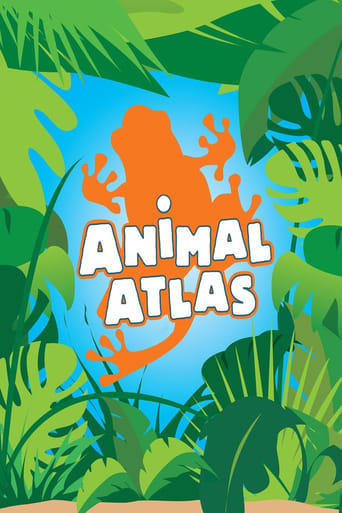Animal Atlas Season 7

Animal Atlas is produced by Longneedle Entertainment, LLC, a subsidiary of Bellum Entertainment Group. Animal Atlas is a 30-minute educational wildlife show that "takes children on a tour of discovery, uncovering the secrets of how animals live and thrive. Young viewers meet animals from the familiar to the astounding, and the domesticated to the wild, including the diverse creatures of the African savanna, the finned and flippered of the big deep, and the colorful cast of the equatorial rainforest". Atlas began in 2004 for its first season in national syndication and will be going on its tenth year of national syndication during the 2013-2014 season. As of January 2013, Bellum will have produced over 230 high definition episodes of Animal Atlas and fourteen home entertainment DVD titles about animals.
Watch NowWith 30 Day Free Trial!
Animal Atlas
2004
Animal Atlas is produced by Longneedle Entertainment, LLC, a subsidiary of Bellum Entertainment Group. Animal Atlas is a 30-minute educational wildlife show that "takes children on a tour of discovery, uncovering the secrets of how animals live and thrive. Young viewers meet animals from the familiar to the astounding, and the domesticated to the wild, including the diverse creatures of the African savanna, the finned and flippered of the big deep, and the colorful cast of the equatorial rainforest". Atlas began in 2004 for its first season in national syndication and will be going on its tenth year of national syndication during the 2013-2014 season. As of January 2013, Bellum will have produced over 230 high definition episodes of Animal Atlas and fourteen home entertainment DVD titles about animals.
Watch Trailer
With 30 Day Free Trial!
Animal Atlas Season 7 Full Episode Guide
Animals may seem to change in only one way—they grow up and grow old. But animals also evolve and adapt, though this process can take many generations. In this episode, we’ll reveal some of the most incredible adaptations in the animal world.
The human world sure spreads a lot of rumors about the animal world—of which we are a part, of course.
How is color used in the animal kingdom? Certainly to attract, but also to conceal. What about color as a signifier of rank? Ask the silverback gorilla about that one. Yes, through all the colors of the rainbow and from spots to stripes, we’ll reveal the myriad fashions and intents of the animal world.
A close look at three behemoths: the elephant, rhino, and hippo. All are enormous and all are related—in more ways than one.
Why do we love monkeys? Well, they make funny faces, live in trees, have dexterous hands, and an athletic manner of moving through the branches. But mainly, they’re a heckuva lot of fun. From the Old World to the New World, this is one rollicking ride with the monkeys.
What makes a bird special? What doesn’t? Flight, feathers, beaks, bills, webbed feet, unique diets, a range of sizes, and incredible habitats make birds one of the most various and fascinating kinds of animals the world over.
Carnivores come in a variety of shapes and sizes. In this episode, we’ll look at carnivores who either live in or simply feed in the water. We’ll meet the enormous whale shark, bald eagle, jaguar, and playful otter, to name a few.
We’re social. Are other animals social, too? Do some animals live together, play together, and need each other to survive and thrive? You bet! We’ll meet a few kinds of animals that live the social life, and others that live a very different solitary life.
A rollicking and informative romp through the world of those scary “S” creatures: spiders, snakes, scorpions and sharks. We take a closer look at the two arachnids, the fish, and the reptile on the list.
A panoramic look at invertebrates and insects. First, a basic overview of how invertebrates and vertebrates are different, beyond the obvious prefix, “-in.” Then, we delve into the world of the largest group of animals. We ask how an exoskeleton differs from a skeleton made of bone. We find out who the arthropods are and what cold-blooded means in the “In” world.
All about tigers: the various species and how they differ in terms of size, habitat, location, and diet. We meet animals brave enough to live in tiger territory, and compare tigers to the rest of the members of the cat family. We find out how a tiger hunts and how its stripes aid in the process.
A panoramic survey of the ruminants, from giraffes to deer to cattle to antelopes to goats and sheep. We divvy the ungulates into groups based on the number of toes they have, and ask them directly, “why do you chew your cud?” And hey, what is “cud”? We look at how the cud-chewers differ from their grazing, herbivorous cousins, and how a four-chambered stomach can turn a green lawn into a hearty meal.
An in depth exploration of New World monkeys. First, we explore the New World—what is the “New World’? We look at how the flora, fauna, and monkeys of the Americas differ from their “Old World” counterparts. Along the way, we climb through the trees with spider monkeys, woolly monkeys, tamarins, and howler monkeys, just to name a few.
An exploration of the life inside tropical rainforests. We ask what defines a rainforest? Where are rainforests located? What animals live there? Along the way we meet the giant anteater, the capybara, the bush dog, sloths, tapirs, and jaguars, too.
Free Trial Channels
Seasons


























